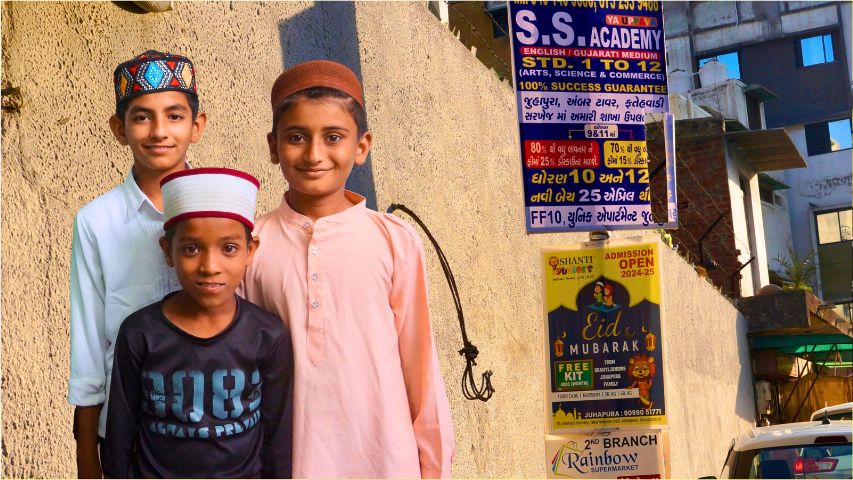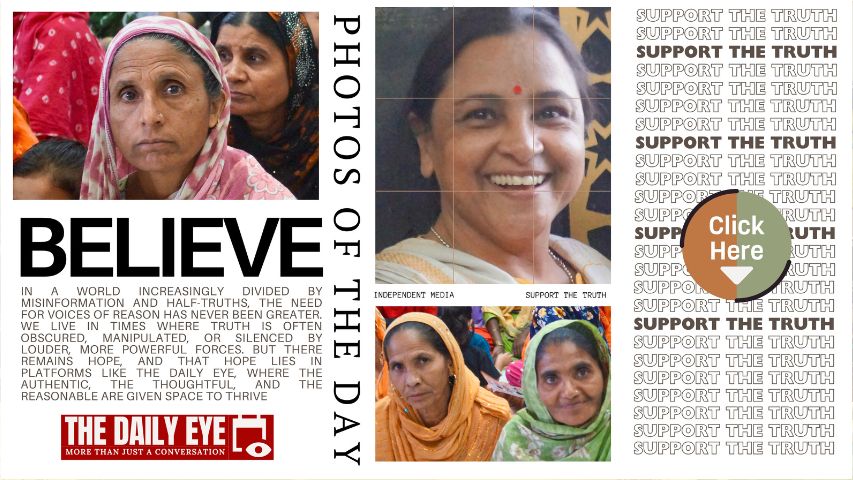-853X543.jpg)
POLITICS: UNSEEN VULNERABILITY OF MADRASA CHILDREN
by HUMRA QURAISHI October 20 2024, 12:00 am Estimated Reading Time: 5 mins, 5 secsIn the face of verbal and physical attacks, madrasa children remain vulnerable. This piece, by Humra Quraishi, calls out the inaction of critics, urging community leaders to protect the future of these young lives.
Photography: Vinta Nanda
Madrasa children in India are facing relentless verbal and non-verbal attacks from both right-wing politicians and extremists. These vulnerable students, many from economically deprived backgrounds, endure not just societal neglect but also violent aggression. Madrasa bashing is on the rise, fuelled by unfounded accusations and Islamophobic propaganda. This piece highlights the urgent need for community leaders and policymakers to step in, protect these children, and address the growing marginalization.
Why verbal and also non-verbal attacks on madrasas?
In recent years, incidents targeting madrasa children have risen sharply, especially in BJP-ruled states and even in the capital city, New Delhi. One such horrifying case occurred in 2018 when eight-year-old Mohammad Azeem, a student of a madrasa in South Delhi’s Begampur, was lynched by local Hindutva extremists. Shockingly, this wasn't an isolated incident in that area. Just a year before, a group of madrasa students in the same locality was brutally beaten and forced to chant "Bharat Mata Ki Jai" by right-wing attackers. Despite the gravity of these crimes, the response from political leaders, child rights forums, and commissions has been deafeningly silent.
Such violent incidents aren’t confined to Delhi. In 2019, madrasa students in Uttar Pradesh’s Unnao were assaulted with cricket bats by Bajrang Dal members. Days later, another madrasa in Fatehpur’s Behta village was attacked. These incidents expose a chilling pattern of violence against madrasa students, leaving us questioning: Why aren’t these attacks being condemned by political leaders, especially when innocent children are involved? Where is the accountability?
The verbal and non-verbal assaults on madrasas are not random acts but part of a broader right-wing strategy to demonize these traditional centres of learning. Fuelled by baseless propaganda, madrasa critics paint these institutions as breeding grounds for extremism without ever stepping foot inside them. This unfounded demonization aims to erode the legitimacy of madrasas, thereby stripping already vulnerable children of their only access to basic education and safety.

Where are these critics when madrasa children are attacked by the Hindutva brigades?
These critics—right-wing politicians, semi-governmental figures, and even some chief ministers—are quick to vocalize their disdain for madrasas but remain conspicuously silent when these children are attacked. Their silence is not just complicit but actively harmful, as it allows the spread of Islamophobic narratives and encourages further attacks. The Right-Wing has managed to make madrasa bashing a fashionable tactic in their anti-Muslim rhetoric, linking these institutions to terrorism without any evidence, while ignoring the everyday struggles faced by the children and teachers.
For over three decades, I have visited orphanages and madrasas, interacting with the children who study there. Many of these children are orphans or come from severely disadvantaged backgrounds. Their families often send them to madrasas because it’s their only chance at a secure roof, two meals a day, and some form of education. Yet today, even these basic necessities are under threat. The continued right-wing attacks not only vilify these institutions but make life more dangerous for the children who rely on them for survival.
Madrasa critics often overlook—or intentionally ignore—the barebones reality of these institutions. Many madrasas operate without modern conveniences like televisions, radios, or computers. They are far removed from the technological and educational advancements available to most mainstream schools. These are not elite centres of indoctrination but humble institutions struggling to provide basic education to children from marginalized communities.
Despite their challenges, madrasas have historically been institutions of learning respected across religious lines. In fact, Hindu families once sent their children to madrasas for education, viewing them as prestigious learning centres. Munshi Premchand, one of India’s most celebrated writers, received his early education in a madrasa in Uttar Pradesh. This shared educational heritage has been systematically erased by the current political narrative, which seeks to divide and alienate communities.
A call to community leaders: Where are they?
Amidst these relentless attacks, the absence of Muslim community leaders is particularly troubling. Their lack of engagement with madrasa children leaves these vulnerable students without the support and protection they so desperately need. While communal tensions rise, these leaders must step in, not only to provide emotional and psychological support but also to guide these children toward broader educational opportunities.
One solution could be ensuring that madrasa students are also enrolled in regular schools. This hybrid education model, where children receive religious education alongside mainstream schooling, could provide them with the best of both worlds. In Kashmir, for example, orphanages have successfully implemented this model, allowing children to attend regular schools while continuing their religious studies in the morning and evening. This balanced approach equips them with skills that prepare them for the modern workforce, while preserving their religious heritage.
The current state of most madrasas—poorly funded and reliant on community donations—makes it difficult to adopt such models widely. Unlike the Mughal era or the Zamindari system, where madrasas were funded by the ruling class, today’s madrasas survive on meagre resources. They are largely maintained through zakat, the obligatory charitable donations made by Muslims, and limited waqf board funding. If we want madrasa children to thrive in modern India, we need to push for better financial support and integration into mainstream education systems.
The plight of madrasa children today is a national tragedy. These children, who should be given every opportunity to succeed, are instead targeted, vilified, and attacked. Their safety and education should be a priority for us all, yet they remain overlooked by political leaders and community figures alike. It is time for this to change. Our collective silence must end, and we must advocate for these children’s right to a future—one where they are not demonized for their education or faith but are given the tools to thrive in a diverse, inclusive society.





-173X130.jpg)

-173X130.jpg)

-173X130.jpg)
-173X130.jpg)

